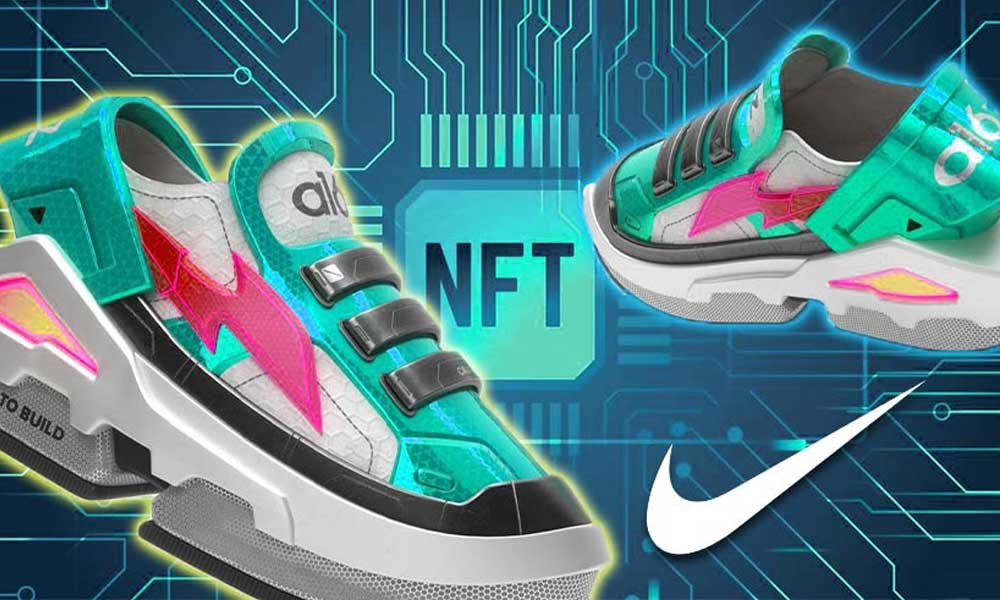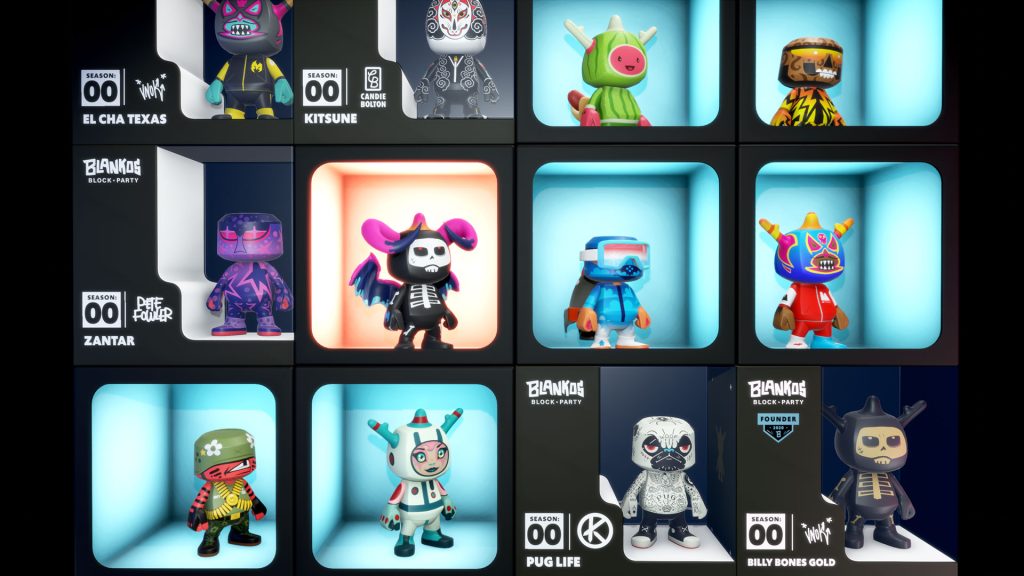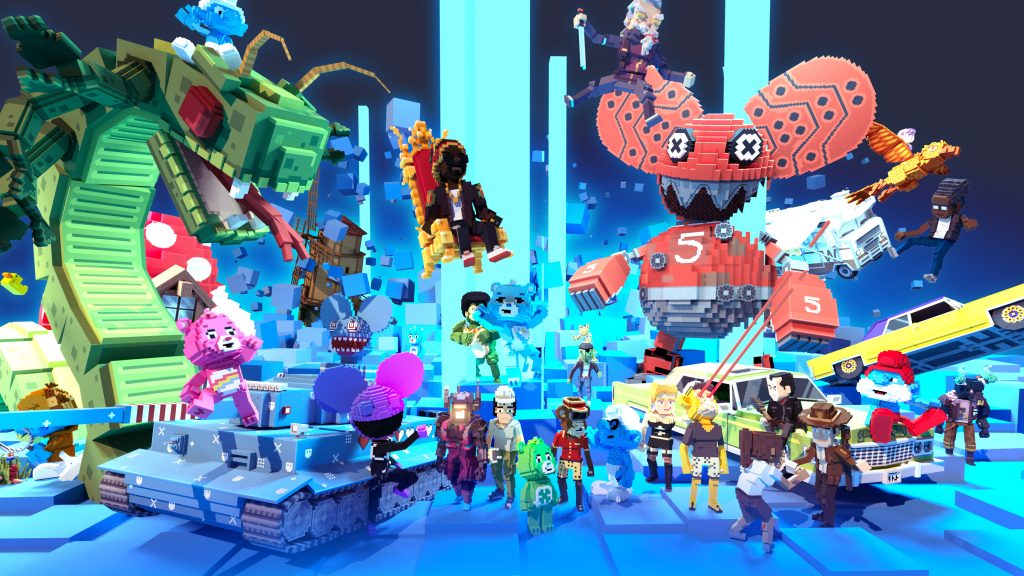Looking into getting a piece of digital artwork on the Internet for a modest amount and receiving a one-of-a-kind digital token proving your ownership of the artwork. This article will teach you how to get your hands on your very own first NFT, which even huge businesses are dabbling in.
What is an NFT ?
An NFT is a digital asset that symbolises physical objects such as art, music, in-game goods, and films. They are purchased and traded online, commonly using cryptocurrency, and are typically encrypted with the software just like any other digital currencies.
NFTs are unique and each art contains a digital signature that prevents NFTs from being swapped for or equivalent to one another.
NFT have been suggested as a way for establishing ownership over an item that may otherwise be easily replicated. So, when someone purchases an NFT, they are receiving a digitally authenticated receipt proving that they are the only owner of the asset. Furthermore, unlike traditional works of art, NFTs cannot be destroyed since they are recorded on a blockchain identical to cryptocurrencies.
Despite the fact that they have been present for nearly a decade, NFTs are gaining attention rapidly as a popular means to buy and sell digital artwork. Initially, NFTs existed as digital artworks in a variety of forms, such as video clips of memorable sporting events or digital artworks reproductions of high value that were maintained under strict protection.
However, NFTs gained popularity in 2021 and made news when the auction house Christie’s produced a record-breaking NFT sale of 69.3 million dollars for Mike Winkelmann’s digital art “Everydays: The First 5000 Days.”
So how Does an NFT work?
NFTs are a component of the Ethereum blockchain, which houses the vast majority of the world’s NFTs. Ethereum, like bitcoin and Dogecoin, is a cryptocurrency, but NFTs include extra information that allows them to operate differently than cryptocurrencies.
NFTs are supported not just by the Ethereum blockchain, but also by other block chains, such as Tron’s NFT TRC-721, which was launched on December 20, 2020.
Because the majority of the people in the world is unfamiliar with the realm of NFTs, here are some examples of NFTs that exist at the moment.
- Graphic Art
- Videos
- Digital Collectibles
- Game skins
- Music
- Designer sneakers




NFTs are essentially digital collector’s items, like actual collector’s items. So rather than receiving a genuine painting or a unique piece of sculpture, the buyer receives a digital file that only belongs to the owner.
In essence, if an individual possesses an NFT, the person can easily verify that they are the owner using your private key, which is the evidence of ownership that the NFT owner obtains from the NFT creator, which is the certificate of authenticity. The NFTs are built in such a way that future resale provides a possibility for the developer to receive a royalty share.
On the other side, if you are an NFT creator, you get to define the scarcity of the digital objects and have the ability to sell in any NFT market or peer – to – peer, rather than being confined to any platforms or middlemen.
What is the purpose and where is it used?
Increases the earning capacity of Creators
The most common use of NFTs nowadays is in the field of digital content. This is due to the fact that the industry is now in a state of disarray. Platforms are sapping content producers’ income and earning potential.
When a creator shares their work on social media, the platform earns money by selling adverts to the artist’s followers. They earn exposure in exchange, but exposure alone does not cover the artist’s expenditures.
However, NFTs pave the way for a new creator economy in which creators retain control of their work rather than handing it over to the platforms that promote it. Ownership is ingrained in the content and the creator has the advantage.
When a creator manages to sell their work, the money goes straight to them and If the NFT is sold by the new owner, the original creator may indeed be entitled to royalties. Since the creator’s identity is part of the token’s metadata, which cannot be changed, this is ensured every time an NFT is sold.
Potential to improving the game experience
Game makers have shown a lot of interest in NFTs. NFTs may be used to keep track of who owns what in-game items, drive in-game economies, and deliver a variety of other incentives to players.
Like In many regular games, you may purchase in-game items that can be used in your game. However, If the item was an NFT, you can recover your investment by auctioning it once the game is over and if the creator is lucky and that item is more appealing at that time, the creator can even make a profit.

As producers of the NFT, game makers can receive a royalty every time an item is bought and sold on the market. As a result, a more mutually advantageous business model emerges, in which both players and developers profit from the subsequent NFT market.
This also implies that even if the creators stop supporting a game, the items you’ve gathered continue to stay as yours. As a result, in-game artefacts become digital collectibles with a significance beyond the game.
Making Domain names more notable
The Ethereum Name Service employs NFTs to provide Ethereum addresses the flexibility to names like thisismywallet.eth that are easier to remember. This implies that instead of a more technical domain like 0.X098781, you might ask someone to pay you ETH via the customised address

This functions in the same way as a domain name on a website does, in that it makes an IP address more relevant to the company. ENS names, like domain names, have a particular value based on their length. Unlike domains, ENS does not require a domain registry to permit ownership transfer. Instead, you may use an NFT marketplace to sell your ENS ids.
NFTs in the world of Advertising and Branding
Nothing has sparked as much interest in the marketing of brands as non-fungible tokens (NFTs) in the past year. Some companies are utilising NFT collectables or special editions to generate new income streams, increase brand loyalty, and raise funds for a great charity, while others have used them to promote their brand, tell a narrative, or reach more customers
While they gained interest in 2021, they are expected become mainstream instrument in the marketing industry in 2022. Brands like Asics, Clinique, Taco Bell, Coca- Cola regardless of their industry have started using NFTs in novel ways to advertise new product launches, increase social media following, support a campaign, or demonstrate support for a charity or cause.
Coca-Cola produced four NFTs, animated, one-of-a-kind digital artworks that give multi-sensory experiences and unlock surprise goods for the first owner upon purchase. The surprises included a ‘Coca-Cola Bubble Jacket Wearable’ that can be worn in virtual reality platform Decentraland, which was designed to build anticipation and provide entertainment value.
How to buy NFTs
Getting your first NFT can be summarised into these simple 4 steps.
Step 1: Purchase Ethereum from a regulated broker or exchange, such as Binance, eToro
Step 2: Create a Metamask wallet and deposit your ETH into it.
Step 3: Link to an NFT marketplace like Crypto.com
Step 4: Using the ETH in your metamask wallet buy your first NFT
Setting up a cryptocurrency wallet is the first step in purchasing an NFT. There are many of alternatives to select from, but an Ethereum compliant wallet is the best place to start.
The following are some of the websites that sell NFTs like Rarible, Foundation, OpenSea.io
There are two approaches of selling NFTs. You can do it by owning an NFT. An NFT can also be minted by the person selling it. NFTs may be created on sites like OpenSea, SolSea, and others. After minting the NFT, it may be listed for sale on any of the sites.
The future
Even as NFTs rise in popularity, there is always the chance that the bubble may burst, just as there is with any other asset class. NFTs may be the hottest thing in town right now, but they still have a long way to go before being generally accepted and become mainstream, just like any new technology. Despite the staggering amounts of money injected into the economy, NFT remains to be a niche commodity that may prove to be a passing interest.
However there is still more that is yet to be explored in the realm of NFTs with major developments coming through. If you are looking for more information on NFTs or seeking to invest the below mentioned podcast could be a good start
Sources:
Codedesign. 2021. How brands are using NFTs?. [online] Available at: <https://codedesign.org/how-brands-are-using-nfts> [Accessed 12 April 2022].
ethereum.org. 2022. Non-fungible tokens (NFT) | ethereum.org. [online] Available at: <https://ethereum.org/en/nft/#ethereum-and-nfts> [Accessed 12 April 2022].
Kane, I., 2022. TRON introduces NFT standard TRC-721. [online] Dappradar.com. Available at: <https://dappradar.com/blog/tron-introduces-nft-standard-trc-721> [Accessed 12 April 2022].
Sardana, S., 2021. NFTs: what are they and why are they so popular?. [online] Moneyweek.com. Available at: <https://moneyweek.com/investments/alternative-finance/bitcoin/602928/what-are-nfts-non-fungible-token> [Accessed 12 April 2022].


Great read!
Very well researched and written content with relevant and appealing visuals
Good job Mahesh !
Well done Mahesh..well structured and easy to understand.
Good job bro…
Amazing Read buddy
Good job Mahesh 😊
Well explained. Keep going 🙂
Very interesting and insightful read about NFTs! Thanks for sharing more on this hot topic of the moment!
Thank you Andrea for your valuable feedback.
Me very good reading and easy to digest.
Amazing!
NFT’s are such a difficult thing to wrap your head around. You have clearly reflected your thoughts and ideas. it was a lovely read.
Detailed, well explained article.
Great read . well written article
It was very knowledgeable piece and a great read… thank you…
Great article
Thank you:)
Good read!
Great read.. well explained article
Well explained
Thank you
Very well written and an easy guide to understand NFTs. Job well done!
Great work Mahesh
Great read!
It’s Awesome bro ,❤️
Amazing read. Very informative. Thanks Mahesh
Hey great read buddy.
Amazing
Keep up the incredible work!
keep up the good work!!
Very detailed blog about NFTs. Great work.
Very well explained.
Thank you Dev for your valuable feedback.
Great writings about the NFT(Non fungible tokens)..one of the best content i had gone through..you’re right about the use case for NFTs. The real issue is that people are using current speculation to dismiss the usefulness of the tech.
Not that there is speculation in this case. Or at least none out of the ordinary. NFTs are backed by an underlying digital good. They have literal value.
Great Work
The writing was captivating. Way to go!
Wow, that’s brilliantly written Mahesh!!!
Excellent and informative article Mahesh.Well done
Good article giving an overview of the NFT world. Good work Mahesh!
Wow, that’s a well written blog! Very informative, finally understood something about NFTs. Thank you!
Great to see we are ready and updated on the current trend on the market and people are actually putting in time and effort to be a part of It. Great read and thank you for the great info.
Good work Mahesh.
Well narrated. All the best.
Well written Mahesh. Keep up the good work.
Very detailed blog, Nice !!
Congratulations on your first article!! It was worth reading.
Loved the article! Little did I know it was this easy to buy one.
Great article..
Wow adipoliii broo👍😍
That’s Great.
Well explained.
Amazing Article well written and easy to understand
Thank you for your insight ! Very well written and such lucid explanations about NFTs.
Good one
Made an interesting read!
Thank you 🙂
Well detailed information for beginner looking to get into NTF’s
Thank you Binil for your valuable feedback and yes definitely you should make your first move into the NFT world.
Knowledgeable & easily comprehendible content ; thank you!
Thank you Shashank for your valuable feedback.
A poli, well done!
Thank you 🙂